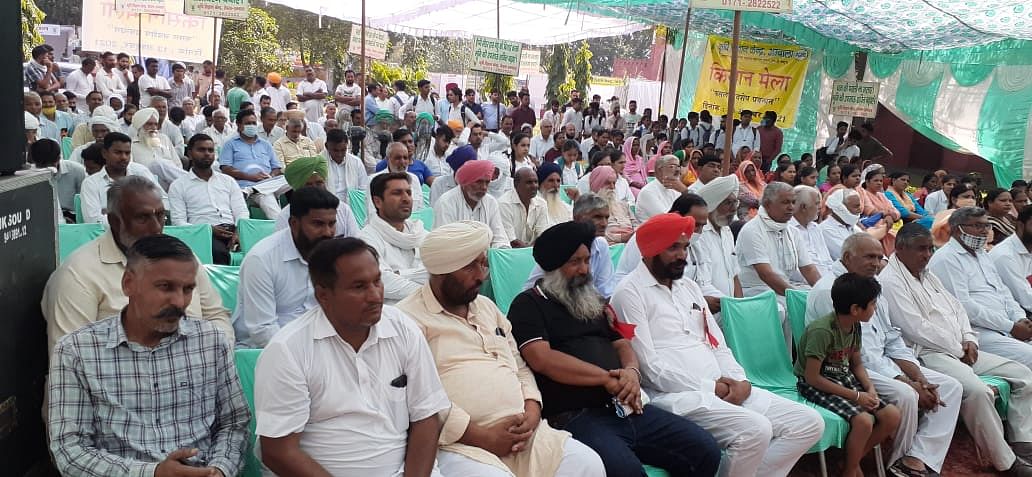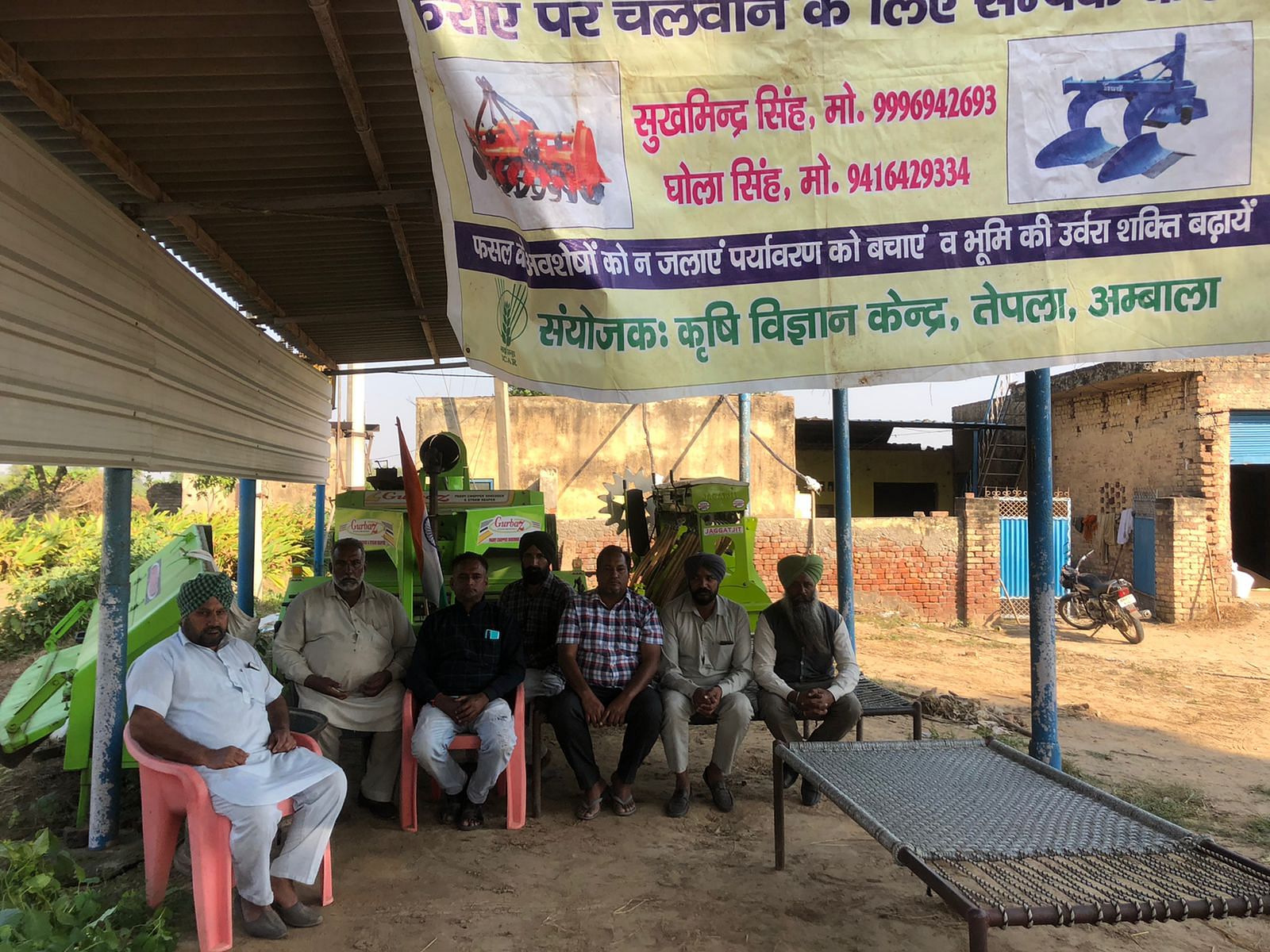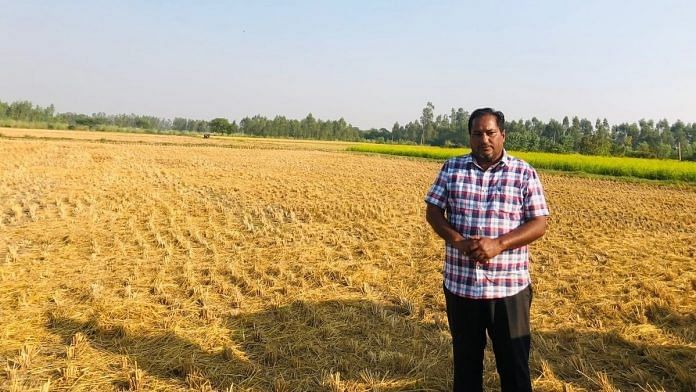Ambala: An impressive fall of nearly 80 per cent in stubble burning cases so far this year has made Ambala a model district in Haryana for managing farm fires ahead of the Rabi sowing season.
In-situ and ex-situ management, awareness camps, machine support, subsidies, and village inspection have helped the district administration contain the numbers — from 702 cases between 15 September and 30 October last year to 146 in the corresponding period this year.
Not a single FIR was registered against any erring farmer this time, as the state planned ahead and didn’t wait for the harvesting season to begin before creating awareness.
Farmers burn the paddy stubble once the crop is harvested, clearing the ground for them to then plant the next season’s crop. The Rabi sowing season usually begins in November, and these fires contribute significantly to air pollution, even in neighbouring states. This becomes a headache for state governments at this time of the year.
Ambala’s numbers compare quite favourably with the overall state figures and those from other districts. According to data from the state agriculture department, Haryana has seen a 52 per cent fall in the total number of farm fires so far this year — 2,561 cases as against 5,328 in 2020.
However, hotspots like Kaithal, Karnal, Fatehabad and Kurukshetra continue to see a fair number of cases. Kaithal reported 682 farm fires this year compared to 968 in 2020 (30 per cent fall); Karnal 690 cases as against 904 (24 per cent); Fatehabad 254 cases compared to 557 (55 per cent); and Kurukshetra 418 as against 791 (48 per cent).
“Ambala has managed to perform well by following the template spelt out by the department. The department has addressed both in-situ and ex-situ management along with subsidies and micro-level inspection at the critical villages,” said Sumita Mishra, Additional Chief Secretary, Agriculture and Farmers Welfare, Haryana, and chairperson of the Haryana State Pollution Control Board.
Also read: ‘Odd-even’ in emergency only, Delhi will try other ways to tackle air pollution: Minister Rai
What Ambala has done right
Ambala Deputy Commissioner Vikram Singh, who took charge of the district in June this year, made aggressive efforts to reduce farm fires.
“We started the awareness camps and training programmes early this year. Usually, district officials start these programmes in September when the harvesting season begins, but we decided to work on our plan early this year and this has helped us bring down the cases without registering a single FIR against any defaulting farmer this year,” said Singh.
The district registered 13 FIRs last year. But so far this year, the administration has only fined the farmers who were found guilty. According to district officials, 41 challans have been issued and Rs 1.07 lakh has been collected as fines.
Haryana has divided villages into red zones (six farm fire cases in a year) and yellow zones (up to 5 farm fires). The Ambala district has identified eight red zone villages and 89 yellow zone villages.
“We engaged 11 agriculture officers for these identified villages. Four SDMs were made nodal officers for their subdivisions to bring down numbers to zero in red zones. However, making machinery available to the farmers at CHC (Custom Hiring Centres) on a rent basis was prioritised,” said Singh.
He was referring to machines like happy seeder, super seeder, hydraulic reversible plough, rotary slasher and straw baler with rack, among others, which are used to turn residue into fertiliser.
“After the harvesting season, farmers are in a hurry to plant the next crop (wheat or potato) and there is little time left to convince them. But this time, we did not wait for the harvest season to end and then start with our planning,” said Haryana’s Deputy Director of Agriculture Girish Nagpal.
Also read: More ‘good news’ for the fans of India-Pakistan rivalry. Lahore beats Delhi in pollution
Village camps
To reach out to the farmers and mobilise them against stubble burning, the administration organised camps in 499 villages. Farmers were trained about new practices to avoid stubble burning.
“In the camps, the farmers were also informed about the government subsidy of Rs 1,000 per acre if they avail benefits of baler formation and get themselves registered on the (government) portal,” Nagpal said.

“Despite the (ongoing) farmers’ agitation, the administration successfully held Kisan Mela on 6 October, where more than 500 farmers turned up. We also did rallies in schools and colleges where children were engaged,” he said.
Wall paintings, hoardings and demonstration vans were also installed at petrol pumps and villages, Nagpal added.
Creating awareness
In Sapera, a village housing 3,200 people and 700 acres of under-cultivation land, 41-year-old Sukhminder Singh has become a role model for neighbouring villages.

Sukhminder owns over two dozen acres of land. This year, he harvested paddy across 12 acres.
“I am part of a farmers’ society. We have nine members and each of us discourage stubble burning. In 2018, we had turned towards new ways of using the residue,” he told ThePrint.
He admitted that challans and FIRs can only work to some extent.
“Who won’t sow a crop out of fear of challans? Challans work only to an extent. We have a WhatsApp group of 50 farmers. In these groups, we post videos of turning residue into fertiliser,” he said.
(Edited by Amit Upadhyaya)
Also read: India’s 2070 net-zero emissions target is a far bigger deal than it sounds



